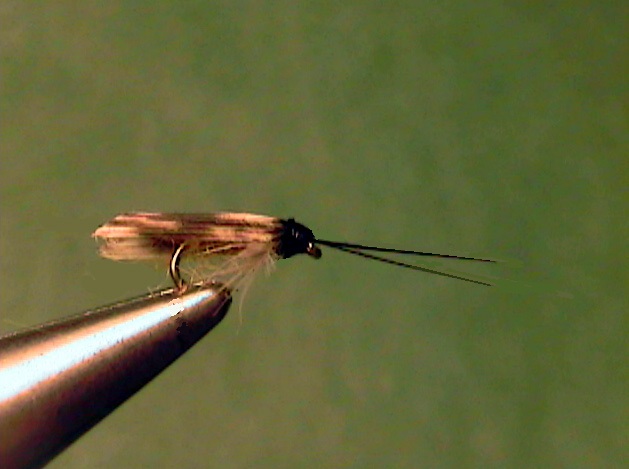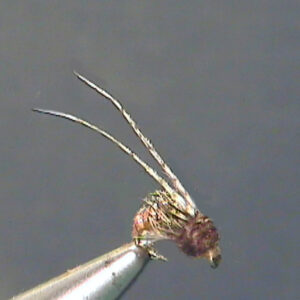Hook Size: 20
The Perfect Fly Speckled Peter Caddis Adult is a trout fly that imitates the adult or fully grown stage of life of the Speckled Peter caddisfly. They stay on the surface of the water for a short time before departing the water. They should be fished on the surface during the hatch as well as later on when the female adults return to the water to deposit their eggs. It is a dry fly that should be treated with floatant.
The egg laying activity is the part of the hatch cycle that is the most fun to imitate. You
can easily see these caddisflies appear late in the afternoons near the banks in large
numbers. The females deposit their eggs both on the surface and on the bottom. We
have been able to catch trout late in the afternoons and early evenings on our dry fly
adult imitation of them.
Presentation:
Normally we fish in an upstream direction, placing the fly close to the banks. If you find
these in smooth water, you may need to make a longer downstream presentation. The
thing you want to do whether you are fishing up or down stream, is to keep the fly fairly
close to the banks. The trout are very aware that is where they are congregating in the
late afternoons and are looking for them there, not out in the stream several yards.
Almost every take we have had on the adults, came very close to the bank.
Be sure to fish the adult imitation on a dead drift and drag free. Don’t be afraid to put
the fly within a foot of the bank. We have caught several trout in the Firehole River in
Yellowstone National Park using this method as well as the Madison River. I feel sure
the method will work at other similar waters where these caddisflies are present. The
egg laying activity is the part of the hatch cycle that we think is most important to
imitate. You can easily see these caddisflies appear late in the afternoons near the
banks in large numbers.
The females deposit their eggs both on the surface and on the bottom. We have been
able to catch trout late in the afternoons and early evenings on our “Perfect Fly” dry
imitation. It’s best to watch the water for rises from trout. If they just swirl, most likely
they are taking the emerging pupae. They may possibly be eating the adults returning
from the bottom where they have dived and deposited their eggs. Even if the
caddisflies are depositing their eggs on the bottom they have to return to the surface
at some point. They cannot immediately fly away. It takes a few seconds for them to get
their wings dry before they depart the surface. For that reason, we only use the dry fly.

